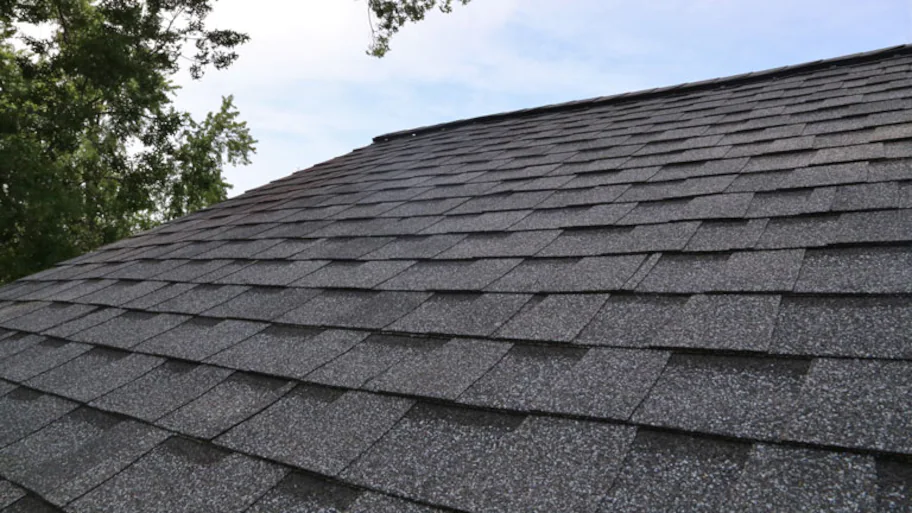Contrasting Prices Amongst Roofing Companies in Gainesville Florida
Contrasting Prices Amongst Roofing Companies in Gainesville Florida
Blog Article
Best Practices for Ensuring Correct Roofing Ventilation
A balanced consumption and exhaust vent ratio, typically 1:300, plays an essential role, with consumption vents preferably put at the lower side of the roofing for trendy air entry and exhaust vents at the top for warm air departure. Maintaining insulation away from vents is important to prevent air flow restriction.
Understand Ventilation Basics
Appropriately understanding air flow fundamentals is important for making certain the long life and efficiency of roof. Efficient air flow reduces wetness accumulation and temperature level extremes in the attic, both of which can bring about significant architectural damages over time. A well-ventilated roof aids in avoiding usual problems such as mold and mildew growth, timber rot, and ice dams, which can jeopardize the stability of the roof products and the underlying structures.
The key goal of ventilation is to facilitate the motion of air, allowing for a regular exchange in between the interior and outdoor settings. This balance is accomplished via a combination of consumption and exhaust vents that collaborate to keep optimal airflow. Consumption vents, normally situated along the eaves or soffits, permit fresh air to get in the attic space, while exhaust vents, usually located at or near the roof ridge, make it possible for warm, humid air to run away.
Secret variables affecting the performance of roof covering air flow include appropriate placement, appropriate sizing, and guaranteeing that both consumption and exhaust vents are unblocked. Routine evaluation and maintenance are crucial to determine potential blockages, damage, or inadequacies in the air flow system, thereby protecting the roofing's performance and resilience.
Sorts Of Roofing System Vents
Roofing system vents play an essential duty in preserving reliable attic room ventilation and, by extension, the overall health of the roof. Different sorts of roof vents are readily available, each with one-of-a-kind benefits tailored to certain roof requirements. Ridge vents, for instance, are installed along the roof's optimal, enabling cozy, humid air to get away from the attic room. They offer continual air flow and mix seamlessly with the roofline, making them both effective and cosmetically pleasing.

Soffit vents are set up under the eaves and work in tandem with roof vents to make certain a well balanced consumption and exhaust system. By permitting cooler air to get in from below, soffit vents facilitate the expulsion of hot air through top vents. Gable vents, situated on the outside walls of the attic, deal one more effective remedy, especially in homes with saddleback roofs.
Assess Your Existing Air Flow

Next, think about the age and condition of your roof covering products and ventilation elements. Older systems might not comply with existing building ordinance or might have degraded in time, lowering their efficiency. Conduct an extensive assessment to determine any indications of wear and tear, such as corrosion, damage, or gaps that can endanger the system's efficiency.
Additionally, measure the attic room temperature and moisture levels. Heats and humidity can show poor ventilation - gainesville fl roofing companies. Use a hygrometer go now and thermostat to acquire accurate readings, contrasting them with outdoor conditions. Consistent discrepancies suggest prospective issues that require attending to.
Setup Best Practices
Efficient installation of roofing air flow systems is extremely important for ensuring optimal performance and durability. Proper setup begins with comprehending the particular ventilation demands of the roofing system and the structure it covers. This includes determining the proper ratio of intake to tire vents, generally sticking to the 1:300 policy, which states one square foot of ventilation for every single 300 square feet of attic room flooring space.

Intake vents need to be installed at the roofing's lower side, often in the soffits, to permit awesome air to enter. Exhaust vents, on the other hand, ought to be mounted near or at the roof covering's peak to promote the exit of cozy, wet air.
Seal all vent links thoroughly to avoid air leakages and prospective water seepage. Usage top notch products and adhere to manufacturer guidelines to make certain sturdiness and efficiency. Additionally, incorporating ridge vents with baffles can substantially boost air flow efficiency by avoiding wind-driven rain and snow from going into the attic room.
Inevitably, specific installation of roof covering air flow systems mitigates prospective issues such as mold and mildew development, ice dams, and structural damage, guaranteeing the roof's honesty and the building's total wellness.
Normal Maintenance Tips
Uniformity in upkeep practices is essential to ensuring the long-term efficiency of roof covering air flow systems. During these examinations, ensure that vents are complimentary of particles, nests, and other obstructions that can hinder air movement.
Cleaning the vents is an additional necessary task. Use a soft brush or a vacuum to remove dust and debris from intake and exhaust vents. Beware not to harm the air vent displays or louvers during the procedure. In addition, inspect the attic room area for any indicators of water damages, which could jeopardize the stability of the roofing system.
Appropriate insulation is webpage similarly vital. Make sure that attic insulation does not block the vents, as this can seriously restrict air flow. If any insulation has changed or resolved, rearrange or replace it to preserve an efficient barrier.
Last but not least, replace any kind of damaged or missing elements promptly. Broken vents, broken roof shingles, or worn-out flashing can all add to insufficient air flow and should be addressed right away. Normal maintenance makes sure that the roof air flow system functions optimally, thereby extending the life-span of the roofing system itself.
Verdict
Guaranteeing correct roof covering ventilation is vital for maintaining the performance and resilience of a roof covering system. Adherence to the 1:300 intake and exhaust air vent proportion, combined with the tactical positioning of vents, is crucial.
A balanced intake and visit this page exhaust vent proportion, commonly 1:300, plays a crucial function, with consumption vents preferably put at the reduced edge of the roofing for amazing air entrance and exhaust vents at the peak for cozy air exit. Consumption vents, typically located along the soffits or eaves, allow fresh air to get in the attic room room, while exhaust vents, typically situated at or near the roofing system ridge, make it possible for hot, damp air to run away.
Soffit vents are mounted under the eaves and job in tandem with roof covering vents to make sure a balanced intake and exhaust system. By allowing cooler air to enter from below, soffit vents help with the expulsion of warm air through top vents. Adherence to the 1:300 consumption and exhaust air vent proportion, paired with the calculated placement of vents, is crucial.
Report this page